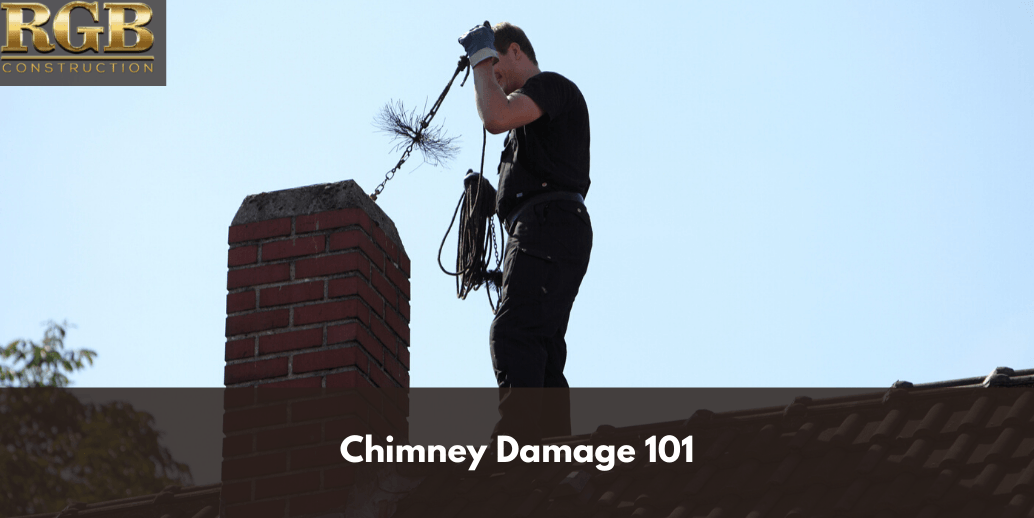Of all the things that can do damage to your roof, your chimney is probably the least likely culprit on your list. After all, you have shingles decaying, wind and rain trying to scour the surface away, and intense temperature fluctuations always trying to loosen it all. Exactly how is a chimney – a necessity for many homes and businesses – such a problem?
You’d be surprised.
First, though, let’s talk for a minute about the dangers of not taking your roof seriously overall. Your roof is the most critical part of your structure. Your walls and foundation are important, but at the end of the day, your roof puts up with a lot more abuse. It also has to stop a lot more insidious problems as a result.
It has to be a stalwart line of defense against water damage, and water damage is no fun. It causes your sheetrock and plaster to rot, it warps your support beams and weakens the superstructure, and it can cause electrical fires. The worst part, though, has to be the potentially dangerous black mold that water damage will often cultivate.
Your roof has to keep your climate control contained, as well. If you have leaks, air will escape, driving your energy bills sky high in no time flat. It has to also keep pests out, which will be a recurring theme with your chimney in a moment.
If your roof gets badly enough out of hand, your resale value will plummet, your curb appeal will disappear, and your insurance policy will go up. Eventually, you could even face your structure being condemned. Taking care of your roof is serious business. With that in mind, when we say that chimney damage can be the ruination of your roof, you know it’s important to take this to heart.
Chimney Structure
Chimneys are almost always made of stone or brick. Usually, for more modern structures, it’s a cinderblock structure with either an outer layer of masonry, stone, a façade of the two, or even siding panels on some styles of house. Older houses may have completely brick chimneys, but cinderblock is a common core material for a lot of them.
A chimney’s purpose is to let the smoke from a fireplace, furnace, or range, out of the house safely. This means they’re generally a vertical shaft that may get narrower one or more times on the way up, with a concrete, masonry, or metal cap at the top.
These caps are usually intended to prevent pests, precipitation and debris from finding their way into your fireplace, HVAC system and home overall.
Masonry Decay
Masonry doesn’t last forever, especially in places with fluctuating temperatures, and on chimneys where a lot of heat is pumped through them while the surroundings are frigid. This causes things to contract and expand, a phenomenon called thermal expansion. It can crumble the mortar and even the brick.
Time and erosion alone will still do this, which is why landmark structures with masonry need constant, continual maintenance to keep them in good repair. Masonry decay can directly have two adverse effects on your roof, though they lead to other problems.
The debris can tear up your shingles and damage your decking, as well as cultivating moss growth and clogging your gutters. Gutter clogs can result in further water damage at an exponential rate.
However, as we said a moment ago, this damage can lead to other indirect problems.
Smoke Damage
Smoke from fires is acidic. The soot, which is just loose ash carried by smoke and solidified as it cools on surfaces, contains a lot of acidic chemical elements. These can discolor shingles and eat away at the adhesives, molecular structure, and much more.
Smoke damage like this can also damage insulation and decking. It can even get into your walls and attic at this point.
Seal Damage
This one is nasty and can come from just seals and flashing decaying, or from masonry decaying and flashing coming away from the chimney’s base. When this happens, water can find its way in, and you start getting spreading water damage.
This damage becomes a classic leaky roof at such a point, complete with the decay, weakened structure, risk of an electrical fire, and molds.
Blockage
Not all debris falls away from the chimney, as they can collapse inward to a degree as well. When this happens, smoke can’t escape the way it should. Depending on your heat source, you can suffer from smoke inhalation or even carbon monoxide poisoning, both of which can sneak up on you pretty quickly.
Pests
Pests can further damage your chimney, causing more blockage and damaging flashing and mortar. But, they’re a problem in and of themselves. Squirrels, wasp and hornet nests, possums, or raccoons are not creatures you want to have an easy access point to the inside of your home. These pests will also get into your walls, your attic, and other places, tearing your roof and home up even more.
Prevention
So, what can you do to prevent chimney damage like this? The best things to do are pretty simple but cost a little money. Having a chimney sweeper come in before winter starts will help lengthen the lifespan of your structure and mortar. It will also help sweep out any presence of pests.
Have an inspector check out the masonry, cap, and flashing, and apply any repairs in fair weather. This will also help get your chimney winter-ready while preventing the rapid decay of this crucial component. Your comfort will thank you, your chimney will thank you, and your roof will thank you.
To learn more, fill out our contact form today.







